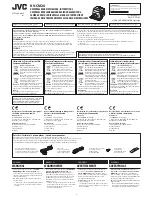
427-0033-00-12 Version 110
February 2019
30
This document does not contain any export-controlled information.
Basic Operation and Configuration
high contrast level from the thermal video enables intelligent video analytic software to perform more
reliably.
The performance of the camera varies throughout the day. Right after sunset, objects warmed by the
sun will appear warmest. Early in the morning, many of these objects will appear cooler than their
surroundings, so be sure to look for subtle differences in the scene, as opposed to just hot targets.
While the imagery on the monitor may at first look similar to ordinary black and white daylight video,
experience with the camera in varying conditions and seasons will lead to an appreciation of the
characteristics that make thermal imaging distinct. A few tips on how to interpret some of the
imagery may help to make the most of the system.
The camera senses small differences in apparent radiation from the objects in view, and displays
them as either white (or lighter shades of gray) for warmer objects, and black (or darker shades of
gray) for colder objects. This is why hot objects such as parts on an engines and exhaust pipes
appear white, while the sky, puddles of water and other cold objects appear dark (or cool). Scenes
with familiar objects will be easy to interpret with some experience. The camera automatically
optimizes the image to provide the best contrast in most conditions.
2.5
Troubleshooting Tips
If help is needed during the installation process, contact a local FLIR representative. FLIR Systems,
Inc. offers a selection of training courses to help get the best performance and value from the
thermal imaging camera.
Find out more at the FLIR training web page:
https://www.flir.com/support-center/training/
No video:
Check the video connection at the camera and at the display. If the connectors appear to
be properly connected but the camera still does not produce an image, ensure that power has been
properly applied to the camera and the circuit breaker is set properly. If a fuse was used, be sure the
fuse is not blown. If the video cabling is suspected as a possible source of the problem, plug a
monitor into the RCA connection inside the camera and determine if it produces an image.
If the camera still does not produce an image, contact the FLIR dealer or reseller who provided the
camera, or contact FLIR directly (contact information is provided on the rear cover of this manual).
Performance varies with time of day:
It may be possible to observe differences in the way the
camera performs at different times of the day, due to the diurnal cycle of the sun. Recall that the
camera produces an image based on temperature differences.
At certain times of the day, such as just before dawn, the objects in the image scene may all be
roughly the same temperature, compared to other times of the day. Compare this to imagery right
after sunset, when objects in the image may be radiating heat energy that has been absorbed during
the day due to solar loading. Greater temperature differences in the scene generally will allow the
camera to produce higher-contrast imagery.
Performance may also be affected when objects in the scene are wet rather than dry, such as on a
foggy day or in the early morning when everything may be coated with dew. Under these conditions,
it may be difficult for the camera to show the temperature the object itself, rather than of the water
coating.
Unable To Communicate Over Ethernet:
First check to ensure the physical connections are intact
and that the camera is powered on and providing analog video to the monitor. Confirm that the IP
address for the PC is on the same network as the camera.
















































